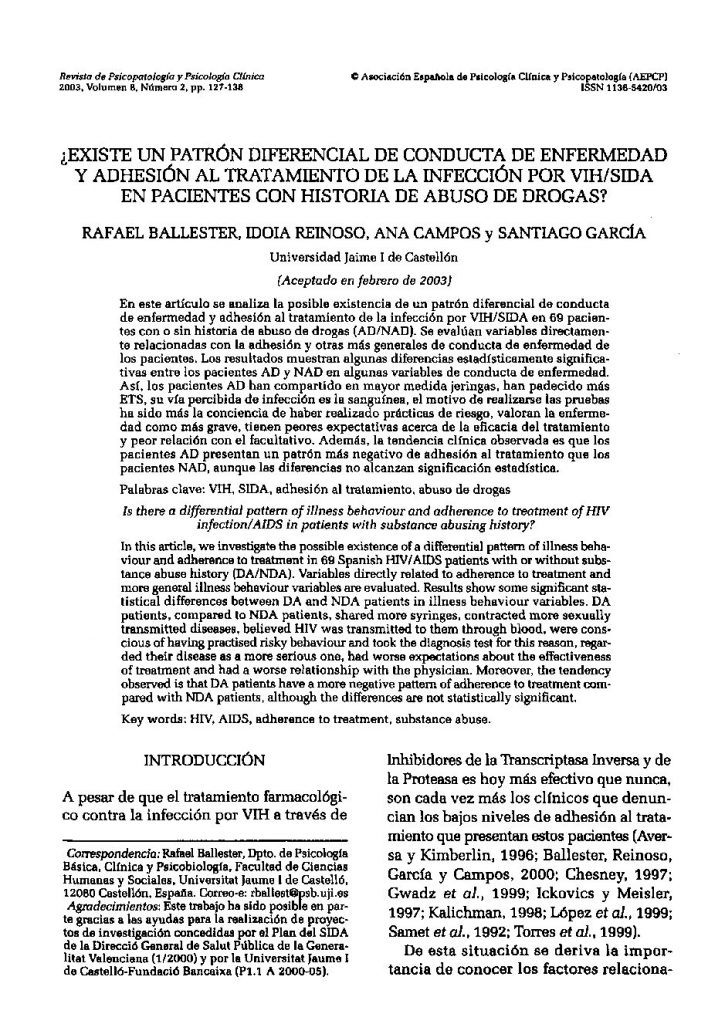¿Existe un patrón diferencial de conducta de enfermedad y adhesión al tratamiento de la infección por VIH/SIDA en pacientes con historia de abuso de drogas?.

- La intervención de autoayuda por correo en el tratamiento de fumadores.
- ¿Existe un patrón diferencial de conducta de enfermedad y adhesión al tratamiento de la infección por VIH/SIDA en pacientes con historia de abuso de drogas?.
- Detección de problemas relacionados con el alcohol en la familia a través de los hijos.
- La Técnica de Rejilla como instrumento de evaluación y formulación de hipótesis clínicas.
- Escala PANAS de afecto positivo y negativo para niños y adolescentes (PANASN).
- Informe sobre las actividades llevadas a cabo en la Comisión Nacional de la Especialidad en Psicología Clínica (CNEPC).
- Los fenómenos disociativos: Una revisión conceptual.
In this article, we investigate the possible existence of a differential pattern of illness behaviour and adherence to treatment in 69 Spanish HIV/AIDS patients with or without substance abuse history (DA/NDA). Variables directly related to adherence to treatment and more general illness behaviour variables are evaluated. Results show some significant statistical differences between DA and NDA patients in illness behaviour variables. DA patients, compared to NDA patients, shared more syringes, contracted more sexually transmitted diseases, believed HIV was transmitted to them through blood, were conscious of having practised risky behaviour and took the diagnosis test for this reason, regarded their disease as a more serious one, had worse expectations about the effectiveness of treatment and had a worse relationship with the physician. Moreover, the tendency observed is that DA patients have a more negative pattern of adherence to treatment compared with NDA patients, although the differences are not statistically significant.
En este artículo se analiza la posible existencia de un patrón diferencial de conducta de enfermedad y adhesión al tratamiento de la infección por VIH/SIDA en 69 pacientes con o sin historia de abuso de drogas (AD/NAD). Se evalúan variables directamente relacionadas con la adhesión y otras más generales de conducta de enfermedad de los pacientes. Los resultados muestran algunas diferencias estadísticamente significativas entre los pacientes AD y NAD en algunas variables de conducta de enfermedad. Así, los pacientes AD han compartido en mayor medida jeringas, han padecido más ETS, su vía percibida de infección es la sanguínea, el motivo de realizarse las pruebas ha sido más la conciencia de haber realizado prácticas de riesgo, valoran la enfermedad como más grave, tienen peores expectativas acerca de la eficacia del tratamiento y peor relación con el facultativo. Además, la tendencia clínica observada es que los pacientes AD presentan un patrón más negativo de adhesión al tratamiento que los pacientes NAD, aunque las diferencias no alcanzan significación estadística.



